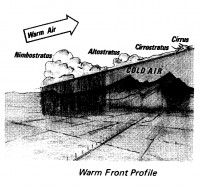 Are you Weather-wise...or are You Otherwise?
Are you Weather-wise...or are You Otherwise? (86.0 KiB)
Blasters needn't be weathermen, but they should mind the skies...
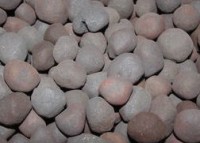 Blasting Down The Cost Of Taconite Pellets (177.6 KiB)
Blasting Down The Cost Of Taconite Pellets (177.6 KiB)
Minnesota iron ore producers are presented with several non-traditional innovations that could cut costs by nearly $100 million per annum...
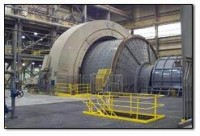 Blasting For Improved Autogenous Milling At Hibbing Taconite Company (411.7 KiB)
Blasting For Improved Autogenous Milling At Hibbing Taconite Company (411.7 KiB)
Fully autogenous mills rely on the large, competent fraction of feed to act as grinding media. Research indicated that Hibtac mills require specific amounts of 6 to 10-inch ore. High recirculating loads require a steady influx of large rock. Blast designs, therefore, are presently characterized by wide patterns and low powder factors. Current efforts are aimed at improving mill throughput while reducing overall energy costs...
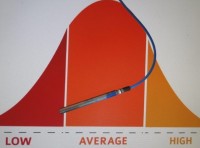 Cap Testing at the Minntac Mine (1992) (89.7 KiB)
Cap Testing at the Minntac Mine (1992) (89.7 KiB)
This report summarizes field testing of non-electric delay caps. Nominal cap times may not reflect actual field results...
 Characterization of the Pre and Post Blast Environments (2003) (208.6 KiB)
Characterization of the Pre and Post Blast Environments (2003) (208.6 KiB)
The closest measures that form ‘bookends’ to the blasting process are drill monitoring and optical size analyzers. Previously published work by: Thompson, Yin, Vynne and others; have relied on assorted known parameters against which drill monitoring data was compared...
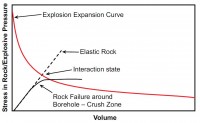 Comparison of the Non-Ideal Shock Energies of Sensitised and Unsensitised Bulk ANFO-Emulsion Blends in Intermediate Blasthole Diameters (2012) (227.4 KiB)
Comparison of the Non-Ideal Shock Energies of Sensitised and Unsensitised Bulk ANFO-Emulsion Blends in Intermediate Blasthole Diameters (2012) (227.4 KiB)
This paper investigates the influence of non-ideal detonation characteristics related to the blasthole diameter, base emulsion sensitivity (micro-balloon sensitised versus unsensitised) and percent emulsion on the explosive shock energy available to break rock using ANFOemulsion blends. (2012)
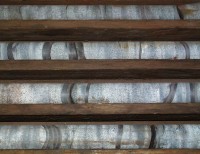 Determination of Magnetite Content (1983) (477.7 KiB)
Determination of Magnetite Content (1983) (477.7 KiB)
This Master's thesis describes calibration and use of a down-hole
probe for magnetite in banded iron formation. (1984)
 Digital Delay Blasting (2005, Duluth) (628.1 KiB)
Digital Delay Blasting (2005, Duluth) (628.1 KiB)
In 2004, a Northern Minnesota mine began to experiment with programmable electronic detonators for improved blasting control due to the close proximity of surrounding communities..... Improvements were sought over the pyrotechnic based delays ability to provide the needed accuracy and fragmentation.
 Downstream Costs and Their Relationship to Blasting (125.9 KiB)
Downstream Costs and Their Relationship to Blasting (125.9 KiB)
Blasting may enjoy as much as a 3 to 1 cost advantage over grinding. This is important in metal mine/milling operations where ore is ground as fine as 60 microns...
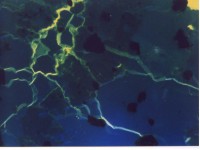 Effects Of Blasting On Crushing And Grinding Efficiency And Energy Consumption (221.8 KiB)
Effects Of Blasting On Crushing And Grinding Efficiency And Energy Consumption (221.8 KiB)
Blasting has an important impact on mining and milling well beyond the necessary ability to dig and load the ore efficiently. There is an increasing body of blasting research indicating significant impacts in crushing and grinding. These include increased production through higher output and fewer delays for bridging and jamming by oversize...
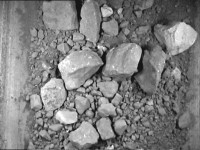 Evaluation Of Optical Sizing Methods (1999) (165.7 KiB)
Evaluation Of Optical Sizing Methods (1999) (165.7 KiB)
On-stream and grab sample size analysis methods are compared against...
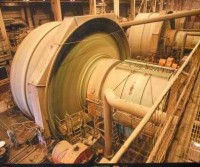 Exploring The Data Adding Value With Non--traditional Geologic Initiatives (2003, Duluth) (2.7 MiB)
Exploring The Data Adding Value With Non--traditional Geologic Initiatives (2003, Duluth) (2.7 MiB)
Underutilized data offer mine geologists a value creation opportunity that should be explored much the same as prospective ground. Large amounts of data are collected but not evaluated by geologists... Geologists, therefore, risk becoming task oriented. ... geologists can correlate in-situ physical rock properties and drill-and-blast data with downstream mill performance. Drill monitoring data can map zones of varying grind-ability and bedding thickness. Geo-technical data from drill core can be block modeled to index fragment size.
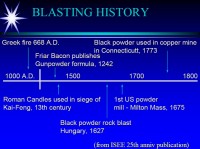 Explosion In Mining (2000, Duluth SME) (424.1 KiB)
Explosion In Mining (2000, Duluth SME) (424.1 KiB)
A LONG look back and a short look ahead at iron ore blasting...
 Geological Data For Blasting (1996) (101.3 KiB)
Geological Data For Blasting (1996) (101.3 KiB)
A look at often available rock property data that will help map the course toward better blast designs...
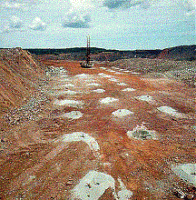 Improve Milling Through Better Powder Distribution (2001) (186.6 KiB)
Improve Milling Through Better Powder Distribution (2001) (186.6 KiB)
A Kuz-Ram model of Minnesota taconite, comparing the relative roles of higher powder factor to improved powder distribution...
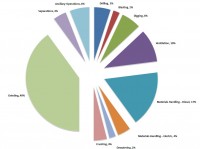 Non-Ideal Blasting for Ideal Grinding - Part Two (2014) (905.3 KiB)
Non-Ideal Blasting for Ideal Grinding - Part Two (2014) (905.3 KiB)
Building on previous work, this paper expands the template for modeling the economic relationship between blasting and grinding. Modeling indicates the following results: Electronic detonators would require a mill cost reduction of 0.4%. Glass micro balloons (adding 1%) require a 1% improvement. Paint grade aluminum (adding 3% Al) requires a 19% reduction and granular aluminum requires a 2% reduction. Doubling of drill and blast requires an 18% reduction and a doubling of powder cost a reduction of 12%.
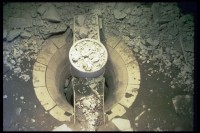 Optimized Iron Ore Blast Designs for SAG/AG Mills (2001, Vancouver) (402.6 KiB)
Optimized Iron Ore Blast Designs for SAG/AG Mills (2001, Vancouver) (402.6 KiB)
Few mine to mill issues inspires as heated debates as blasting for SAG & AG mills. Increased blast energy may produce more surface area at a lower cost than mechanical milling. Decreased blast energy may, on the other hand, create more large pieces needed for grinding media. Rational allocation of energy in the comminution of ores is the essence of profitability and survival of taconite producers...
 Optimizing Non-ideal Blasting for Ideal Grinding (2013) (577.3 KiB)
Optimizing Non-ideal Blasting for Ideal Grinding (2013) (577.3 KiB)
This paper looks downstream; particularly at grinding costs. Recent research has shed new light on reactions within and behind the C-J front, energy partitioning and non-ideal behavior in bulk products. Ideal explosives provide a high level of brisance as a result of intense reactions in a narrow band. A simplistic model suggests that the cost of adding 1% GMB would be offset if grinding costs dropped by 1.2%.
 Selection of Powder Factor in Large-Diameter Blast Holes (300.2 KiB)
Selection of Powder Factor in Large-Diameter Blast Holes (300.2 KiB)
Paper documents the relationship between material handling and processing costs compared to blasting cost. Overall costs fell 5% when powder factor rose by 15%...
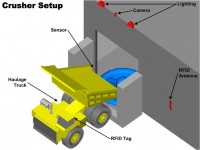 Size Matters On The Mesabi Range (599.6 KiB)
Size Matters On The Mesabi Range (599.6 KiB)
This paper discusses the history of fragmentation analysis on the
Mesabi Range in Minnesota. The history of image analysis is discussed
and current static and on-line analysis technology is described.
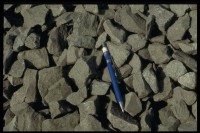 Stemming Selection for Large-Diameter Blast Holes (860.2 KiB)
Stemming Selection for Large-Diameter Blast Holes (860.2 KiB)
High-speed photography plus shovel & crusher productivity are used
to evaluate various stemming practices...
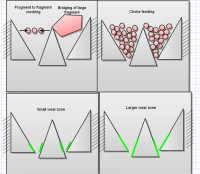 The Efficiency of Blasting Versus Crushing and Grinding (1997) (111.6 KiB)
The Efficiency of Blasting Versus Crushing and Grinding (1997) (111.6 KiB)
This paper discusses the relative efficiencies of blasting, crushing and grinding. Blast optimization should be expanded beyond mining and include processing costs. ...
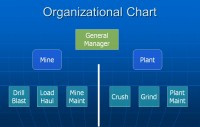 The Role of Blasting Operations in Metal Mining (2002) (139.3 KiB)
The Role of Blasting Operations in Metal Mining (2002) (139.3 KiB)
Drill to mill process optimization remains an elusive goal. This paper explores some of the structural obstacles encountered in many large
organizations...
 Determination of Magnetite Content (1983) (477.7 KiB)
Determination of Magnetite Content (1983) (477.7 KiB)
This Master's thesis describes calibration and use of a down-hole
probe for magnetite in banded iron formation. (1984)
 Comparison of the Non-Ideal Shock Energies of Sensitised and Unsensitised Bulk ANFO-Emulsion Blends in Intermediate Blasthole Diameters (2012) (227.4 KiB)
Comparison of the Non-Ideal Shock Energies of Sensitised and Unsensitised Bulk ANFO-Emulsion Blends in Intermediate Blasthole Diameters (2012) (227.4 KiB)
This paper investigates the influence of non-ideal detonation characteristics related to the blasthole diameter, base emulsion sensitivity (micro-balloon sensitised versus unsensitised) and percent emulsion on the explosive shock energy available to break rock using ANFOemulsion blends. (2012)
 Optimizing Non-ideal Blasting for Ideal Grinding (2013) (577.3 KiB)
Optimizing Non-ideal Blasting for Ideal Grinding (2013) (577.3 KiB)
This paper looks downstream; particularly at grinding costs. Recent research has shed new light on reactions within and behind the C-J front, energy partitioning and non-ideal behavior in bulk products. Ideal explosives provide a high level of brisance as a result of intense reactions in a narrow band. A simplistic model suggests that the cost of adding 1% GMB would be offset if grinding costs dropped by 1.2%.
 Non-Ideal Blasting for Ideal Grinding - Part Two (2014) (905.3 KiB)
Non-Ideal Blasting for Ideal Grinding - Part Two (2014) (905.3 KiB)
Building on previous work, this paper expands the template for modeling the economic relationship between blasting and grinding. Modeling indicates the following results: Electronic detonators would require a mill cost reduction of 0.4%. Glass micro balloons (adding 1%) require a 1% improvement. Paint grade aluminum (adding 3% Al) requires a 19% reduction and granular aluminum requires a 2% reduction. Doubling of drill and blast requires an 18% reduction and a doubling of powder cost a reduction of 12%.
 Are you Weather-wise...or are You Otherwise? (86.0 KiB)
Blasters needn't be weathermen, but they should mind the skies...
Are you Weather-wise...or are You Otherwise? (86.0 KiB)
Blasters needn't be weathermen, but they should mind the skies... Blasting Down The Cost Of Taconite Pellets (177.6 KiB)
Blasting Down The Cost Of Taconite Pellets (177.6 KiB)
 Blasting For Improved Autogenous Milling At Hibbing Taconite Company (411.7 KiB)
Blasting For Improved Autogenous Milling At Hibbing Taconite Company (411.7 KiB)
 Cap Testing at the Minntac Mine (1992) (89.7 KiB)
Cap Testing at the Minntac Mine (1992) (89.7 KiB)
 Characterization of the Pre and Post Blast Environments (2003) (208.6 KiB)
Characterization of the Pre and Post Blast Environments (2003) (208.6 KiB)
 Determination of Magnetite Content (1983) (477.7 KiB)
Determination of Magnetite Content (1983) (477.7 KiB)
 Digital Delay Blasting (2005, Duluth) (628.1 KiB)
Digital Delay Blasting (2005, Duluth) (628.1 KiB)
 Downstream Costs and Their Relationship to Blasting (125.9 KiB)
Downstream Costs and Their Relationship to Blasting (125.9 KiB)
 Effects Of Blasting On Crushing And Grinding Efficiency And Energy Consumption (221.8 KiB)
Effects Of Blasting On Crushing And Grinding Efficiency And Energy Consumption (221.8 KiB)
 Evaluation Of Optical Sizing Methods (1999) (165.7 KiB)
Evaluation Of Optical Sizing Methods (1999) (165.7 KiB)
 Exploring The Data Adding Value With Non--traditional Geologic Initiatives (2003, Duluth) (2.7 MiB)
Exploring The Data Adding Value With Non--traditional Geologic Initiatives (2003, Duluth) (2.7 MiB)
 Explosion In Mining (2000, Duluth SME) (424.1 KiB)
Explosion In Mining (2000, Duluth SME) (424.1 KiB)
 Geological Data For Blasting (1996) (101.3 KiB)
Geological Data For Blasting (1996) (101.3 KiB)
 Improve Milling Through Better Powder Distribution (2001) (186.6 KiB)
Improve Milling Through Better Powder Distribution (2001) (186.6 KiB)
 Non-Ideal Blasting for Ideal Grinding - Part Two (2014) (905.3 KiB)
Non-Ideal Blasting for Ideal Grinding - Part Two (2014) (905.3 KiB)
 Optimized Iron Ore Blast Designs for SAG/AG Mills (2001, Vancouver) (402.6 KiB)
Optimized Iron Ore Blast Designs for SAG/AG Mills (2001, Vancouver) (402.6 KiB)
 Optimizing Non-ideal Blasting for Ideal Grinding (2013) (577.3 KiB)
Optimizing Non-ideal Blasting for Ideal Grinding (2013) (577.3 KiB)
 Selection of Powder Factor in Large-Diameter Blast Holes (300.2 KiB)
Selection of Powder Factor in Large-Diameter Blast Holes (300.2 KiB)
 Size Matters On The Mesabi Range (599.6 KiB)
Size Matters On The Mesabi Range (599.6 KiB)
 Stemming Selection for Large-Diameter Blast Holes (860.2 KiB)
Stemming Selection for Large-Diameter Blast Holes (860.2 KiB)
 The Efficiency of Blasting Versus Crushing and Grinding (1997) (111.6 KiB)
The Efficiency of Blasting Versus Crushing and Grinding (1997) (111.6 KiB)
 The Role of Blasting Operations in Metal Mining (2002) (139.3 KiB)
The Role of Blasting Operations in Metal Mining (2002) (139.3 KiB)
 Determination of Magnetite Content (1983) (477.7 KiB)
Determination of Magnetite Content (1983) (477.7 KiB)
 Optimizing Non-ideal Blasting for Ideal Grinding (2013) (577.3 KiB)
Optimizing Non-ideal Blasting for Ideal Grinding (2013) (577.3 KiB)
 Non-Ideal Blasting for Ideal Grinding - Part Two (2014) (905.3 KiB)
Non-Ideal Blasting for Ideal Grinding - Part Two (2014) (905.3 KiB)
